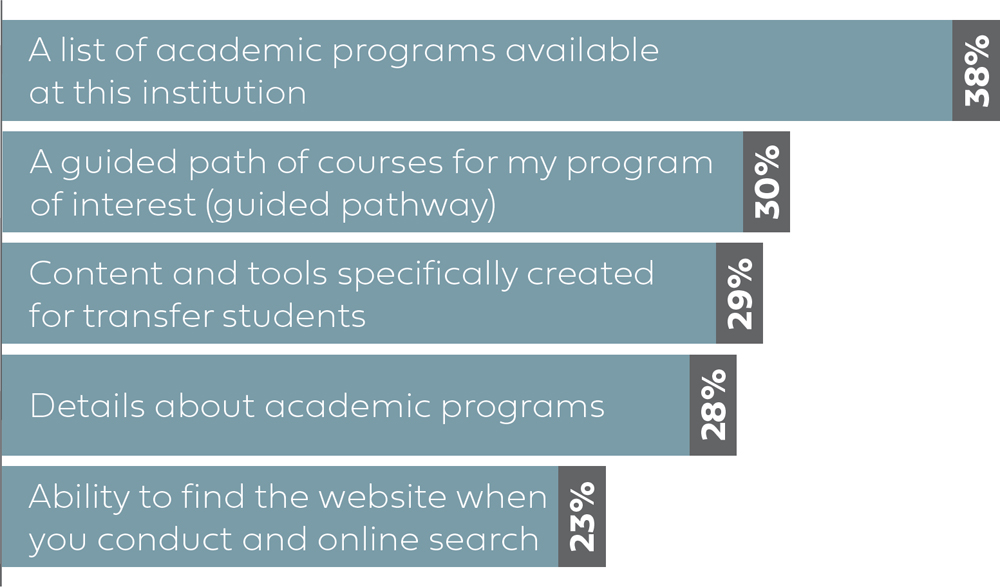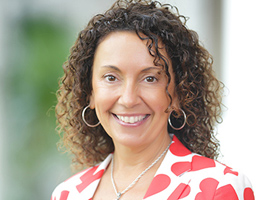enrollment
The Transfer Experience: Getting Transfer Students There and Helping Them Succeed
This blog was originally published in the Winter 2021 issue of the NACAC Journal of College Admission. It was co-authored by Omar Correa, associate vice chancellor for enrollment management at the University of Nebraska at Omaha, and Harvey Werner, director of undergraduate admissions at Loyola University New Orleans.

Nearly 40 percent of all college students are transfer students, yet they may be the most overlooked student population in higher education. As declining numbers of high school graduates causes the pool of traditional college students to decline, transfer students will be increasingly important to the enrollment health of colleges and universities. However, many campuses have underpowered transfer recruitment strategies. They do not address the unique needs, behaviors, and expectations of a group that has already been through the enrollment process, often has very specific reasons for changing institutions, and tends to conduct very focused and accelerated searches for a new campus destination.
Understanding student behaviors during the transfer planning process can help institutions effectively plan to meet their needs, ultimately improving recruitment of this important group of students.
Survey data
The data used in this article comes from two surveys of nearly 3,000 students conducted via email in spring 2020 by RNL. Forty-four percent of student respondents were current transfer students, and 56 percent were prospective transfer students. Ninety percent were born in 1999 or after, making them first-year students, sophomores, or juniors in college at the time of the survey.
Over 40 percent of survey respondents identified as white, 19 percent as Black, 18 percent as Hispanic, and 9 percent as Asian. All students lived in the United States, with 26 percent from the West, 36 percent from the South, 18 percent from the Midwest, and 20 percent from the Northeast.
Transfer planning: Half of transfer students always planned to switch institutions
Transferring is not an impulsive decision but something students consider for months or even longer—or is part of their planned enrollment journey from the beginning of their college careers. Nearly half (47 percent) of respondents had always planned to transfer. Fifteen percent had planned to transfer for three months, 17 percent for six months, and 12 percent a year or more. Four out of 10 also said they had applied to the institution they were transferring to as a high school student, so this may explain why so many arrived at their current institutions with the intent to transfer.
Most important website content and features
Over half of the students surveyed were local to the institution they had transferred to or were transferring to, and nearly half said they had always known about the institution.
Although respondents had considered transferring to six institutions, on average, over three-quarters of the students in our sample had only considered up to three institutions and 40 percent had applied to only one institution.
More than 90 percent of students listed academics (programs, majors, minors) and the ability to pursue a bachelor’s degree as their top reasons for transferring. Other top reasons included: tuition and cost (84 percent), financial aid (83 percent), and career opportunities (83 percent).
To sum it up, the vast majority of transfer students know they want to transfer well before they actually do; they know why they want to change institutions; and they know which institutions they are considering.
So who are these students? Chances are, you already “know” each other. Forty- two percent of transfer applicants applied to that same institution as first-time freshmen. If applicable, consider honoring their freshman scholarship. Transfers typically know what they want out of the process, so skip the fluff and get down to business with them: What courses will transfer and how quickly can you provide them with that information? And how quickly can you confirm housing availability (or exemptions), finalize an aid package, etc.?
Resources transfer students use
Three out of four transfer students listed college websites as the most useful resource for their planning. Yet one out of every four students thought finding information specifically for transfer students had some degree of difficulty. Although it may not seem like a large percentage, it was particularly hard for first- generation students. Institutions should take this into account as they make sure first-gen students have the information they need if they are considering transferring. The college planning process for transfer students is not as linear and sequential as it is for high school students. Ensuring transfer-specific information is available and easily accessible on your institution’s website is a must.
Personal connections also seem to be especially strong for this group of prospective students, with 57 percent rating recommendations as a useful resource. Nearly half of the students surveyed had a friend or family member who currently attended the institution they were interested in, and 32 percent had received a recommendation or referral from someone who knew the institution well.
When recruiting for your ambassador or student tour guide teams, seek out recent transfer students. You’ll have great representatives on the front line who you can easily match with prospective transfer students. Make these students accessible via a weekly chat function, a texting platform, or some other format where communication can easily be initiated by prospective students. Also consider modifying your traditional tour route and script to something a little more à la carte for transfers. For example: A second-year transfer in bio may only be interested in seeing the science facilities, labs, and possibly specific amenities like the campus gym. Allow the student to identify what they are interested in and customize their tour.
Most transfer students know what they want and are not shy about asking institutions, mostly by emailing admission.
Knowing this—and that nearly 80 percent of respondents thought the institution’s website was the most significant source of information in their transfer planning—is crucial for any transfer recruitment plan. Transfer students let you know when they’re ready to connect, but you also need to make it easy for them to connect with you. Your website must allow them to access needed information quickly (given the shorter search timeline for transfer students) while also enabling real- time connections with admission staff who can both answer key questions and make a case for attending your institution.
Here are some practical things you can think about when assessing your web presence:
- Make sure transfer students can easily find your webpage.
- Develop a content-based SEO strategy that pushes your programs to the top of search results.
- Focus on branded, local, and programmatic searches.
- Assess how you rank for key universal search results (voice, images, videos, etc.).
- Focus content on what students can study and how they can complete the degree.
- Emphasize program benefits and outcomes.
- Provide a transfer calculator so prospective students can calculate their credits.
- Make it easy for transfer students to contact admission staff who can answer specific questions about transferring.
The credit calculator, in particular, appears to be a key opportunity for institutions to attract more transfer students. The vast majority of students who used a calculator (88 percent) said they were satisfied with their experience. However, only one out of three students said they had used a transfer credit calculator. Knowing that this group of students is specially focused on outcomes and getting the information they need to plan the transfer process, we can only assume that those respondents who did not use a credit calculator could not find one on the institution’s site or the institution did not have one. Providing an easy-to-use credit calculator is a must for your transfer recruitment plan.
Transfer student orientations
Three out of four students said they attended transfer student orientations. When planning these, make sure that they really are oriented toward transfer students, not simply the same program you offer to first-time-in-college students. Transfer students are as committed to graduating as any student at your institution. Your commitment to their success needs to start on Day One by ensuring they have the best experience from the get-go.
Some final takeaways:
- Don’t penalize transfer students for not choosing your institution first. Transfer students are critical members of the campus community. Assist with a success plan, as they are looking beyond graduation. Remember this is not their “first rodeo.”
- Focus on their experience and outcomes. Make it easy for them to connect with you.
- Answer questions with specific answers and point to resources on your website.
Remember that as the “traditional” student population shrinks due to demographic changes, transfer students will become increasingly important to meeting your enrollment goals. Give this population the right resources and attention, and you’ll be able to attract transfer students who are a great fit for your institution. Their success is your success!
Find more insights into the transfer student experience
Read the E-Expectations of Transfer Students Report and the 2020 Transfer Student Experience Report for more findings on how transfer students search for institutions to attend. Or talk with our experts about your strategies for recruiting transfer students.
Talk with our experts about transfer student enrollment
Looking to engage more transfer students and increase how many you enroll? Schedule a free consultation with our enrollment experts.

